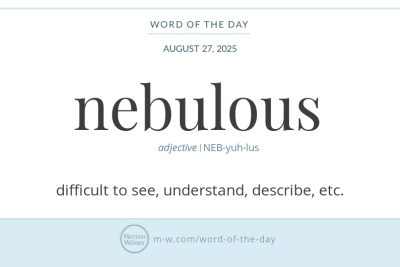
Definition and History of Treaties: Maps, Locks, and Facts

The concept of **treaties** has been a fundamental aspect of **international relations** for centuries, serving as critical instruments in the establishment of peace, trade agreements, and diplomatic relations between nations. These legally binding agreements are pivotal in facilitating cooperation among countries, managing disputes, and shaping global governance. Understanding treaties involves navigating their **definition**, historical context, and the dynamic role they play within the intricate web of international relations.
In exploring the **definition of treaties**, we must consider their legal and diplomatic implications. Treaty-making is a complex process that has evolved over time, reflecting changes in global politics, economics, and social structures. From the intricate **full sail map** of historical treaties to contemporary agreements, the way nations interact through treaties remains a crucial area of study. As we delve into the history of treaties, we will uncover the impact they have had on national borders, sovereignty, and the governance structures that define our world today.
- Definition of Treaties
- Historical Background of Treaties
- Key Types of Treaties
- The Role of Treaties in International Relations
- Treaties and Global Governance
- Case Studies of Notable Treaties
- The Evolution of Treaties Over Time
- Impact of Treaties on National Borders and Sovereignty
- The Treaty-making Process
- Conclusion and Future of Treaties
Definition of Treaties
A **treaty** is defined as a formal and legally binding agreement between two or more sovereign states or international organizations. Treaties are essential tools for establishing **international law**, encompassing a wide range of subjects such as human rights, environmental policy, and trade. When countries embark on treaty-making, they engage in **diplomatic negotiations** wherein terms and conditions are articulated and agreed upon by the involved parties. Once finalized, treaties typically require ratification by the respective governments, making them officially enforceable.
Elements of Treaties
To understand the significance of treaties, it is essential to recognize the core elements that constitute them, including:
- Parties Involved: The sovereign states or organizations that negotiate and sign the treaty.
- Preambles: Introductory statements that set the context and purpose of the agreement.
- Obligations: Specific duties and responsibilities outlined for each party under the treaty.
- Dispute Resolution Mechanisms: Provisions in place to address conflicts that may arise from the treaty's implementation.
- Ratification Process: The formal approval required from each party's governing body to bring the treaty into force.
Historical Background of Treaties
The history of treaties is as vast as it is complex, tracing back to ancient civilizations where agreements were often made through verbal promises or symbolic gestures. The recording of treaties in written form gained prominence in the early modern period, significantly influencing international relations. Notable historical treaties, such as the **Treaty of Westphalia** in 1648, played a pivotal role in shaping the modern state system and acknowledging state sovereignty.
Evolution of the Treaty System
As international relations evolved, so too did the treaty system. The establishment of the United Nations in 1945 marked a new era for treaties, pushing for more standardized practices in treaty-making and strengthening the mechanisms for diplomatic discourse. Treaties began to incorporate not only **bilateral** agreements but also **multilateral** frameworks, reflecting the need for collaborative efforts in addressing global challenges such as climate change and international security.
Key Types of Treaties
Treaties can be categorized into several distinct types based on their nature and purpose:
- Bilateral Treaties: Agreements between two parties that define mutual rights and responsibilities.
- Multilateral Treaties: Instruments involving multiple parties, often addressing broader global issues.
- Self-Executing vs. Non-Self-Executing Treaties: The former automatically become law upon ratification, while the latter require domestic legislation for implementation.
- Framework Treaties: General agreements that set principles and objectives for future, more specific agreements to be developed.
The Role of Treaties in International Relations
Treaties serve as cornerstones in the framework of **international relations**, providing a structured approach to diplomacy among nations. Through treaties, states can manage conflicts, promote peace, and foster collaborative relationships. In many cases, treaties serve as a reflection of the prevailing power dynamics and interests between nations, informing their foreign relations strategies.
Facilitating Peace and Cooperation
One of the most critical roles of treaties is conflict resolution. For example, treaties such as the **Treaty of Versailles** helped various nations navigate the aftermath of World War I and established frameworks for future peace. Additionally, treaties regarding arms control, such as the **Nuclear Non-Proliferation Treaty**, aim to prevent the spread of weapons and promote disarmament, demonstrating how treaties can facilitate international cooperation on security issues.
Treaties and Global Governance
Treaties play a vital role in establishing **global governance** structures. They address transnational challenges that no single country can manage alone, effectively laying the groundwork for international cooperation. Agreements focused on climate change, health pandemics, and human rights exemplify how treaties contribute to creating **global governance** mechanisms that hold nations accountable.
Institutional Frameworks
International **organizations**, such as the UN, often utilize treaties to achieve their objectives, creating frameworks that govern behavior among states. Treaties also provide a foundation for monitoring compliance and establishing protocols, thereby enhancing global accountability.
Case Studies of Notable Treaties
Examining notable treaties throughout history can provide insight into their impact on international relations:
- United Nations Charter: The foundational treaty of the UN established the goals of promoting peace, security, and cooperation among nations.
- North Atlantic Treaty: Formed the NATO alliance, exemplifying the collective defense principle among member states.
- Paris Agreement: A milestone in international climate change efforts, where signatory nations agreed on actions to combat global warming.
The Evolution of Treaties Over Time
As the shifting political landscape and technological advancements shape international relations, **treaties** have adapted to address contemporary issues. The evolution reflects changing norms and values within the global community. For instance, the rise of multilateral treaties in recent decades signifies a response to global interconnectedness, requiring collaborative approaches to tackle challenges that transcend borders.
Impact of Globalization on Treaties
Globalization has also introduced new factors influencing treaties. Economic treaties that seek to lower tariffs and promote trade, such as the **North American Free Trade Agreement (NAFTA)**, demonstrate a growing emphasis on economic collaboration while presenting challenges related to sovereignty and national interests.
Impact of Treaties on National Borders and Sovereignty
Treaties often have significant implications for **national borders** and sovereignty. As countries engage in treaties that delineate territorial boundaries, conflicts may arise, as seen in the historical disputes over regions such as Kosovo and Palestine. The balance between maintaining national sovereignty while promoting international cooperation is a perpetual challenge within treaty frameworks.
Challenges of Sovereignty
Countries must navigate the delicate interplay between adhering to treaty obligations and asserting their national interests. Critically, the decisions made within treaties can lead to tensions in sovereign rights, particularly in areas such as environmental regulations and human rights enforcement.
The Treaty-making Process
The **treaty-making process** involves several key stages—negotiation, adoption, ratification, and implementation. Diplomatic negotiation is crucial as countries deliberate the specifics of the agreement, followed by formal adoption, where the treaty is signed. Ratification is the next step, involving legislative approval by the respective governments.
Implementation and Monitoring
Once ratified, treaties require implementation mechanisms to ensure compliance by all parties. This may involve establishing ***commitment verification protocols** or committees to facilitate adherence to the treaty terms. Monitoring compliance is crucial in maintaining the effectiveness and integrity of treaties and can often involve international oversight.
Conclusion and Future of Treaties
As we conclude our exploration of treaties, it becomes clear that these instruments are not only essential for maintaining the fabric of international relations but are also evolving dynamically to meet contemporary challenges. With the rise of **global issues**, such as climate change and transnational security threats, the future of treaties will likely lean toward increased collaboration and innovation in treaty design.
Moving forward, nations must balance their **sovereignty** with the responsibilities flowing from international engagement. The ongoing evaluation and adaptation of treaties will play a crucial role in addressing the complex landscape of international relations, fostering cooperation, and promoting global governance strategies.
In a world increasingly interconnected through **evergreen electric gates** of trade and communication, the importance of treaties in fostering a stable and cooperative international community cannot be understated. As we look ahead, the future will continually be influenced by how effectively treaties adapt to the shifts and transformations of global landscapes.
Did you find this article helpful? Definition and History of Treaties: Maps, Locks, and Facts See more here Education.
Leave a Reply






Related posts